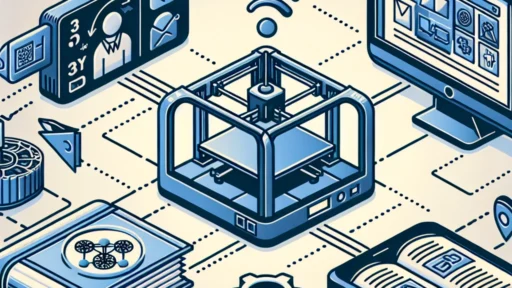The Future of Filaments: What’s Next in 3D Printing Materials
3D printing has become an exciting frontier in manufacturing, art, and even medicine. With its ability to turn digital designs into tangible items, the possibilities seem endless. Just when you think you’ve seen it all, new filaments emerge that challenge our perceptions of what 3D printing can achieve. But what’s next in the world of 3D printing materials? Let’s take a look at the innovations on the horizon.
Biodegradable Filaments: A Greener Future
As environmental concerns continue to grow, biodegradable filaments are gaining traction in the 3D printing community. Traditional plastics can take centuries to decompose, which poses a significant problem. However, biodegradable filaments made from materials like polylactic acid (PLA) or other bioplastics offer a more sustainable alternative. As technology advances, we can anticipate even more options that break down more efficiently, potentially revolutionizing not just 3D printing but how we view waste in manufacturing entirely.
Composite Filaments: Strength Meets Versatility
Gone are the days when 3D printing was limited to just basic plastic models. Composite filaments combine traditional materials with additives – such as carbon fiber or metal – to enhance strength and durability. These filaments can produce prints that rival the strength of traditional manufacturing methods, making them ideal for applications in aerospace, automotive, and even construction industries. Innovations in this area are continually emerging, and as these composite materials become more affordable, we can expect more makers to leverage their unique properties in creative projects.
Engineering with Food: Edible Filaments
Food printing has made strides in the culinary world, but using edible filaments in 3D printing is still in its infancy. Imagine printing intricate chocolate designs or personalized pasta shapes! While the technology has some challenges, like achieving a consistent flow and maintaining taste, the potential applications are tantalizing. We’re likely to see growth in this area, especially for chefs and food designers looking to imprint their creativity right onto a plate.
Medical Marvels: Filaments for Healthcare
3D printing isn’t just for prototyping anymore; it’s making waves in healthcare. Bioinks, specialized filaments designed for 3D printing living tissue, are making headlines. While we’re not quite at the stage of printing entire organs, researchers are developing filaments that can create scaffolding for tissue engineering. This could one day lead to regenerative medicine where patients receive personalized treatment through custom-designed implants or tissue. The work being done in this field is not only exciting but holds the promise of transforming healthcare as we know it.
Smart Filaments: The Rise of Embedded Technologies
With the advent of the Internet of Things (IoT), the integration of smart technologies into traditional processes isn’t just a trend; it’s the future. Imagine printing a part with sensors embedded in it—like a temperature gauge or a weight sensor—right from the printer! Smart filaments that incorporate electronics will allow for intricate designs that can react or communicate with their surroundings. These innovations could change everything from hobbies to industrial applications by bringing functionality into the basic act of printing.
Color and Texture Innovations: A New Dimension
3D printing has come a long way in terms of color and texture, but there’s still so much potential yet to be explored. Multi-material printers that use filaments with varying textures, finishes, and colors are becoming more sophisticated. This will allow designers to create more visually appealing and tactile products, bringing a new depth to consumer goods. As technology continues to improve, we’ll likely see even more choices that will empower creators to think outside the box—literally.
Conclusion: The Sky’s the Limit
As we look toward the future, it’s clear that the potential for innovation in 3D printing materials is virtually limitless. From sustainable choices that care for our planet to technologies that can heal our bodies, the next wave of filaments promises to revolutionize industries far and wide. Whether you’re a maker, an engineer, or just an enthusiast watching the industry grow, it’s an exciting time to engage with 3D printing. As these fresh materials hit the market, they’ll not only improve our creative capabilities but also push the boundaries of what we once thought possible. So, as we embrace these advancements, let’s stay curious and open-minded; the future of 3D printing is just beginning!






